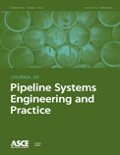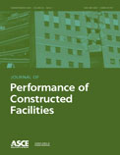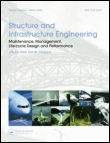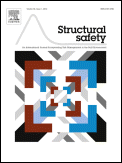
Journal of Pipeline Systems Engineering and Practice
Scope & Guideline
Elevating Standards in Pipeline Systems Engineering
Introduction
Aims and Scopes
- Pipeline Integrity and Safety:
Research centered on the integrity and safety management of pipelines, including leak detection, failure prediction, and risk assessment methodologies. - Hydraulic and Structural Analysis:
Studies involving the hydraulic performance and structural behavior of pipelines under various loading conditions, including seismic impacts and internal pressure. - Material Performance and Corrosion:
Investigations into the mechanical properties and durability of pipeline materials, particularly regarding corrosion resistance and the effects of environmental factors. - Innovative Rehabilitation Techniques:
Development and evaluation of new methods and materials for the rehabilitation of existing pipeline systems, focusing on enhancing service life and operational efficiency. - Data-Driven Approaches:
Application of machine learning, data mining, and other advanced analytical techniques to improve pipeline monitoring, maintenance, and operational decision-making. - Environmental Impact and Sustainability:
Research addressing the environmental impacts of pipeline systems, including studies on leakage effects, remediation techniques, and sustainability practices in pipeline engineering.
Trending and Emerging
- Machine Learning and AI Applications:
An increasing number of studies are utilizing machine learning and artificial intelligence to enhance leak detection, predictive maintenance, and operational efficiency, indicating a trend towards smart pipeline management. - Sustainability and Environmental Resilience:
Research focused on the sustainability of pipeline systems and their environmental impacts is on the rise, reflecting global concerns over climate change and the need for resilient infrastructure. - Advanced Materials and Coatings:
There is a growing emphasis on the development of new materials and protective coatings that enhance the durability and performance of pipelines, particularly in harsh environments. - Real-Time Monitoring Technologies:
The adoption of real-time monitoring technologies, including IoT and sensor systems, is becoming increasingly prevalent, enabling proactive maintenance and immediate response to anomalies. - Integrated Risk Management Frameworks:
Emerging studies focus on integrated risk management frameworks that combine various assessment methodologies and real-time data to provide comprehensive pipeline safety strategies.
Declining or Waning
- Traditional Leak Detection Methods:
There has been a noticeable decline in research focused on conventional leak detection methods, as newer technologies such as acoustic emission and machine learning approaches are gaining traction. - Static Analysis Methods:
Static analysis methods for assessing pipeline performance are becoming less common as the industry increasingly favors dynamic modeling and real-time monitoring techniques. - Basic Material Testing Protocols:
Research centered solely on basic material testing protocols without integrating advanced analytics or environmental factors is declining, suggesting a shift towards more comprehensive and contextual evaluations. - Generalized Risk Assessment Models:
Generic risk assessment models that do not incorporate specific contextual factors or real-time data are being phased out in favor of more tailored and sophisticated approaches.
Similar Journals

JOURNAL OF PERFORMANCE OF CONSTRUCTED FACILITIES
Advancing the Standards of Civil Infrastructure PerformanceJOURNAL OF PERFORMANCE OF CONSTRUCTED FACILITIES, published by the ASCE-AMERICAN SOCIETY OF CIVIL ENGINEERS, is a leading peer-reviewed journal dedicated to the field of civil engineering with a strong emphasis on the performance assessment and sustainability of constructed facilities. Established in 1987 and converging through 2024, this journal has garnered a solid reputation with an impressive Q2 quartile ranking across key areas including Building and Construction, Civil and Structural Engineering, and Safety, Risk, Reliability and Quality. The journal's Scopus rankings further underline its significance, being positioned within the top percentiles of these domains. As it aims to publish innovative research, case studies, and reviews, the journal serves as a vital resource for professionals and academics who are keen on advancing their understanding of the complexities associated with the performance and reliability of civil infrastructure. Researchers and practitioners interested in the latest advancements in construction performance can greatly benefit from the insights and findings published in this esteemed journal.

STEEL AND COMPOSITE STRUCTURES
Advancing the Future of Structural EngineeringSTEEL AND COMPOSITE STRUCTURES is a leading academic journal published by TECHNO-PRESS, dedicated to the fields of Building and Construction, Civil and Structural Engineering, and Materials Science. With a notable Impact Factor and classified in Q1 and Q2 quartiles in multiple relevant categories as of 2023, the journal provides a high-quality platform for the dissemination of innovative research from its converged publishing years of 2004 to 2024. The journal's rigorous peer-review process ensures that only the most impactful studies receive publication, fostering advancements in composite materials and steel structures. Researchers, professionals, and students alike can gain valuable insights into current technologies and applications in these critical fields, making STEEL AND COMPOSITE STRUCTURES an essential resource for anyone involved in structural engineering and materials research. The journal is based in South Korea, and while it offers traditional access options, the breadth of its contributions ensures a global reach and influence.

Bridge Structures
Pioneering Insights for Tomorrow's Bridge SolutionsBridge Structures is an esteemed academic journal dedicated to the field of structural engineering, particularly focusing on the design, analysis, and maintenance of bridge systems. Published by IOS PRESS, a reputable publisher known for its contributions to various scientific fields, the journal serves as an integral platform for disseminating innovative research and advancements within the domain. With an ISSN of 1573-2487 and an E-ISSN of 1744-8999, Bridge Structures has established itself over the years—covering contributions from 2005 to 2024. The journal has attained a commendable ranking within the Q3 category in Building and Construction and holds a position within the 28th percentile among its peers according to the Scopus rankings. Though the journal operates on a subscription basis, its commitment to advancing engineering knowledge is paramount, making it essential reading for researchers, practitioners, and students eager to deepen their understanding of bridge engineering. The journal not only explores theoretical advancements but also emphasizes practical applications, providing a well-rounded perspective on current challenges and solutions in the field of bridge structures.

Structure and Infrastructure Engineering
Exploring Innovations in Structure and InfrastructureStructure and Infrastructure Engineering, published by TAYLOR & FRANCIS LTD, is a premier academic journal that serves as a vital resource in the fields of engineering and construction. Featuring an ISSN of 1573-2479 and an E-ISSN of 1744-8980, this journal has established its reputation as a leader in disseminating high-quality research. Since its inception, it has successfully transitioned through converged years from 2007 to 2024, earning a prestigious position within the Q1 quartile across multiple engineering disciplines, including Building and Construction, Civil and Structural Engineering, and Ocean Engineering, among others. Its impact is underscored by impressive Scopus rankings, particularly its 5th rank in Ocean Engineering within the top 95th percentile. The journal’s commitment to advancing knowledge in safety, risk, reliability, and quality makes it an indispensable platform for researchers, professionals, and students aiming to stay at the forefront of engineering innovations. Access to its comprehensive articles allows for a deeper understanding of contemporary challenges and solutions in infrastructure development.

STRUCTURAL SAFETY
Innovating reliability for resilient structures.STRUCTURAL SAFETY is a premier journal dedicated to advancing the field of engineering with a focus on safety, risk, reliability, and quality in structural analysis and design. Published by Elsevier, this esteemed journal boasts an impressive Impact Factor and ranks in the top quartiles (Q1) of key categories including Building and Construction, Civil and Structural Engineering, and Safety, Risk, Reliability, and Quality. With a significant history spanning from 1982 to 2024, STRUCTURAL SAFETY fosters scholarly exchange among researchers, professionals, and students by publishing innovative and high-quality research articles that contribute to the safety and resilience of engineered structures. The journal operates without open access barriers, ensuring a broad audience can access invaluable insights in the engineering realm. Its distinguished Scopus rankings further underscore its impactful role within the academic community, making it an essential resource for anyone invested in the discipline of structural safety.

ENGINEERING JOURNAL-AMERICAN INSTITUTE OF STEEL CONSTRUCTION
Advancing the Future of Steel Construction.ENGINEERING JOURNAL-AMERICAN INSTITUTE OF STEEL CONSTRUCTION, published by the American Institute of Steel Construction, stands as a vital resource for researchers, practitioners, and students in the fields of Building and Construction as well as Civil and Structural Engineering. With a history tracing back to its convergence in 1968 and an ongoing commitment to advancing engineering knowledge up to 2024, the journal is indexed under the ISSN 0013-8029. Despite its current open access status, the journal carries significant scholarly weight, reflected in its Q3 ranking in both relevant categories for 2023 and Scopus rankings indicating robust academic relevance within its sectors. The publication aims to disseminate innovative research, practical insights, and critical reviews that contribute to the enhancement of steel construction and infrastructure development. Situated in the heart of Chicago, the journal's dedicated focus on steel's pivotal role in engineering design and application forms an essential part of the conversation around modern building practices and sustainability challenges in the construction industry.

Journal of Constructional Steel Research
Elevating Standards in Building and ConstructionJournal of Constructional Steel Research, published by Elsevier Ltd, stands as a leading platform in the realm of constructional steel research since its inception in 1980. With a robust focus on Building and Construction, Civil and Structural Engineering, Mechanics of Materials, and Metals and Alloys, this prestigious journal has earned its place in the Q1 category across multiple disciplines, symbolizing excellence in scholarly contributions. The journal's impressive Scopus rankings further underscore its significance, ranking 30th out of 223 in Building and Construction, and exhibiting strong standings in other related fields. Researchers, professionals, and students will find this publication an invaluable resource, offering access to the latest findings and innovations in constructional steel, necessary for advancing practices in engineering and material sciences. Although it does not operate under an open-access model, the content is meticulously curated to ensure high-quality, peer-reviewed research, continuing to shape the future of steel construction methodologies.

THIN-WALLED STRUCTURES
Transforming Ideas into Structural SolutionsTHIN-WALLED STRUCTURES is a premier international journal published by Elsevier Science Ltd, focusing on the critical areas of Building and Construction, Civil and Structural Engineering, and Mechanical Engineering. With an impressive impact factor and categorization in the Q1 quartile of each respective field, this journal stands at the forefront of engineering research, boasting commendable Scopus rankings—52nd for Mechanical Engineering, 18th for Building and Construction, and 32nd for Civil and Structural Engineering. Since its inception in 1983, THIN-WALLED STRUCTURES has provided a vital platform for disseminating innovative research, practical applications, and theoretical advancements in thin-walled structures, encouraging the development of safer and more efficient design methodologies. Although it operates on a traditional access model, the journal is committed to maintaining high-quality peer review and publishing, making it an essential resource for researchers, professionals, and students aiming to contribute to and benefit from the latest advancements in this dynamic field.

JOURNAL OF PRESSURE VESSEL TECHNOLOGY-TRANSACTIONS OF THE ASME
Connecting Theory and Practice in Pressure Vessel DesignThe JOURNAL OF PRESSURE VESSEL TECHNOLOGY-TRANSACTIONS OF THE ASME, published by the esteemed American Society of Mechanical Engineers (ASME), is a pivotal resource in the fields of Mechanical Engineering, Mechanics of Materials, and Safety, Risk, Reliability, and Quality. With an established track record since 1974, this journal presents high-quality, peer-reviewed research that addresses the latest innovations, theoretical advancements, and practical applications related to pressure vessel technology. Although it does not offer open access, its rigorous publication standards ensure that the articles presented are invaluable to researchers, engineers, and professionals striving for excellence in their fields. As indicated by the 2023 Scopus rankings, the journal holds a respectable position within its quartile ranking (Q3), underscoring its relevance and contribution to advancing knowledge in these critical areas of engineering. The journal continues to serve as a crucial platform for disseminating cutting-edge research, facilitating academic discourse, and supporting the growth of knowledge in pressure vessel technology through its collaborative and multidisciplinary approach.

Structural Concrete
Leading the Way in Concrete Material InnovationsStructural Concrete, published by ERNST & SOHN, is a premier journal dedicated to the field of Civil and Structural Engineering, focusing on innovative research and advancements in concrete materials and technologies. With an impressive impact factor and a consistent ranking in the Q1 category of both Building and Construction and Civil and Structural Engineering, the journal stands as a vital resource for researchers, professionals, and students alike. It is indexed with notable Scopus ranks, underscoring its significance within the academic community. The journal spans a comprehensive scope (from 2001 to the present) that encompasses diverse topics related to the behavior, design, and application of structural concrete. Although not an open access publication, it offers valuable insights and cutting-edge knowledge that contribute to the ongoing evolution of construction practices and materials science. Structural Concrete is an essential platform for sharing pioneering findings and fostering collaboration within this dynamic field.